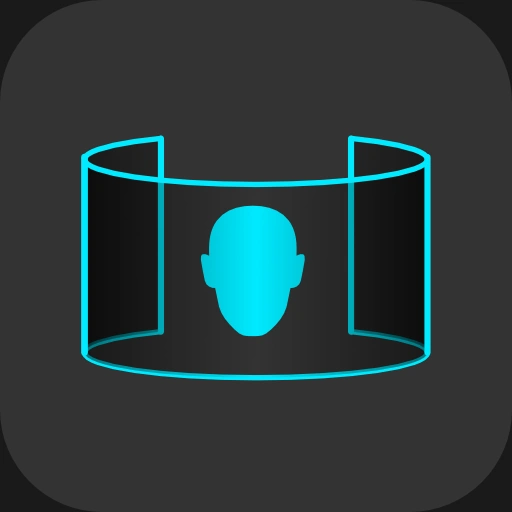
Table of Contents
I happened to stumble upon a real hidden gem the other day while cruising the Google Play Store looking for interesting apps to augment my PC gaming experience. This one has to do with head tracking again, — controlling a game through movements of the head. — Previously we covered a paid app Smooth Track that does largely the same thing for $10. Is it possible that this free app will do just as well and for free? One way to find out!
Head tracking, many options
There are many options available once you start down the rabbit hole that is head tracking. There are both hardware options — TrackIR and many clones — which use a camera and infrared lights usually worn as a headband or clipped to a hat.
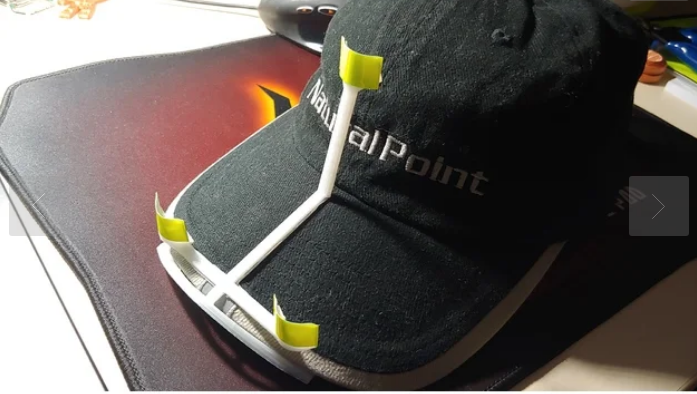
A full TrackIR 5 kit will run you $185.00 on Amazon right now. If you go this route, I can nearly guarantee that you will have an easier time getting this whole thing setup and working.
Alternatively there are software options which make use of hardware that you already own. Smooth Track is only $10 and it works wonderfully. We have already written about it at the preceding link. There are additional options which work with a webcam you already own which we may cover at a later date. For this post we are going to look at a SmoothTrack competitor which is also free. That would be GimbalTrack. You can pick up the app at the link.
GimbalTrack states that it works on any Android device running Android 7 or later, so the vast majority of devices out there. Your device also needs to support the Google Play Services for AR.
To get started, you will need to install:
- GimbalTrack on your Android device.
- Google Play Services for AR on your Android device. –If not already installed.–
- OpenTrack on your PC.
To get this whole thing up and running you’ll need to follow the following process.
1. Setup OpenTrack on PC
Download OpenTrack from the like above to its GitHub page. Install it, — Ignore any Microsoft Defender interference by clicking advanced and install anyway.– Now launch OpenTrack and create a new profile. To do this, click on “Profile” and then “Create new empty config” as shown below.
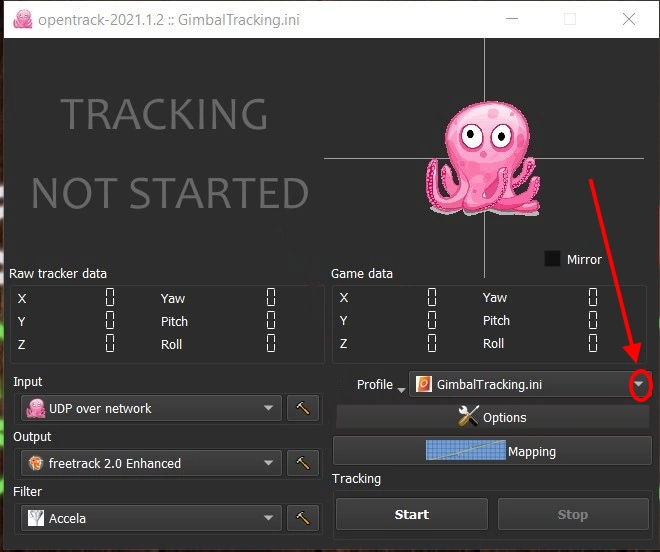
Once you have the profile created, on the right side under the label “Input” select “UDP over network.” Now click on the icon to the right of your selection for input to check which port OpenTrack is using, the default is 4242.
On the “Output” item you’re going to want to select “Freetrack 2.0 Enhanced.” Next click the icon to the right or of you output selection and choose, “Use TrackIR, disable Freetrack.”
You probably want to disable all axis except for “Pitch” and “Yaw.”
The PC configuration should be done.
2. Setup GimbalTrack on your Android device
First, open GimbalTrack on the Android device. You’ll be greeted with 3 pages detailing the setup process.
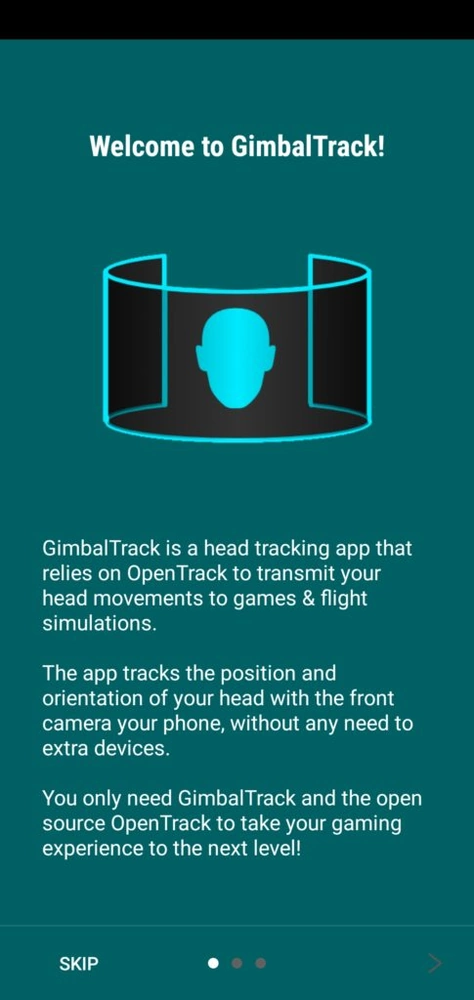
Your phone’s front camera will now activate. –If you get the warning about GimbalTrack trying to access your camera or media click allow.– GimbalTrack takes landmarks from your face such as your nostrils, eyes, mouth, etc. It tracks the movement of these facial features and feeds that information to OpenTrack. OpenTrack then interfaces with your computer and the game you’re playing to translate your head movements into outputs for the game much like using a controller to do the same thing.
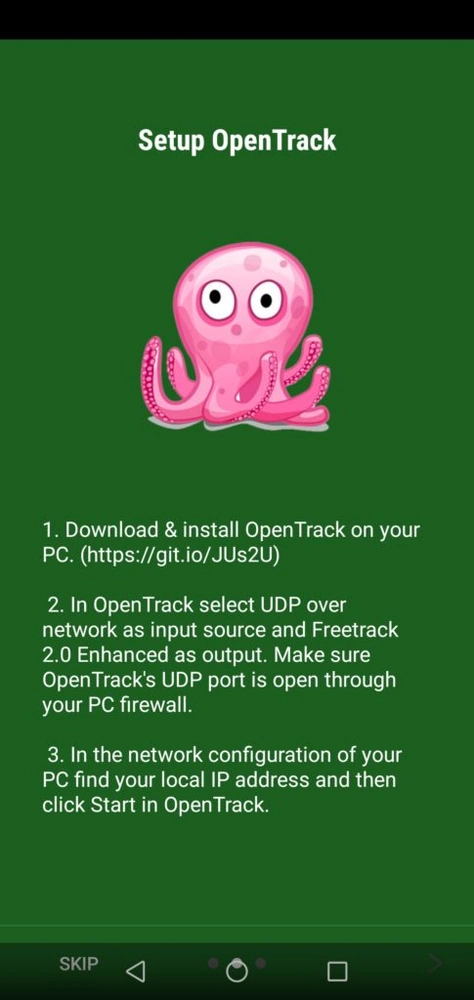
Your PC with OpenTrack and your Android device with GimbalTrack must be connected to the same network. You will also need to know the ip address of your computer on your network. –usually 192.168.0.1 or 192.168.1.1 or similar.–
To continue, click on the gear icon, enter the PC IP and the OpenTrack port, which we have noted above. Once all this is done, we give the OK.
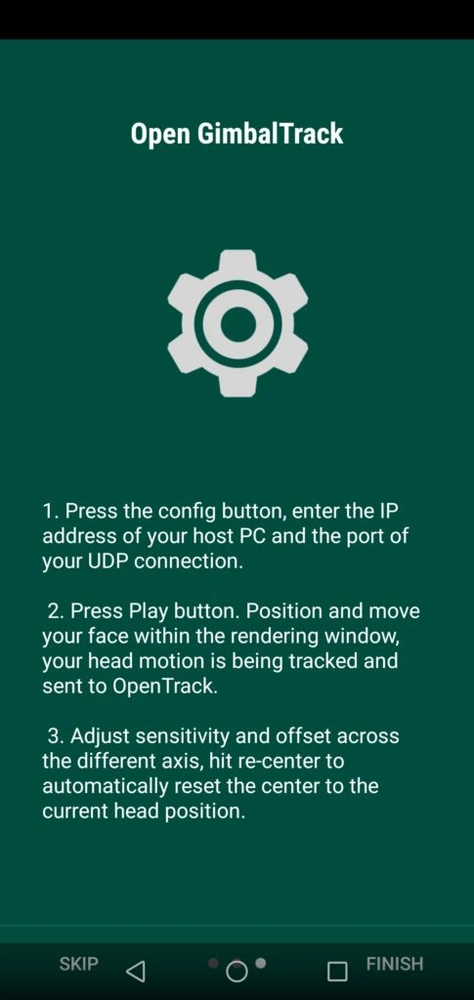
Now all that remains is to start the application by pressing the Play button. A grid will appear over your face on the screen or your smartphone or tablet.
Now launch OpenTrack, press start and the octopus should be moving.
In Game Settings
Here are some adjustment tips,
- Once in a game, the first thing to understand is if the sensitivity is okay.
- A sensitivity that is too high makes movements too fast and jerky. Beyond being annoying this makes me motion sick.
- Too low of a sensitivity makes everything drag and seems like you are drunk. At first set the sensitivity to LOW, then adjust it up from there.
- Once you have the sensitivity right, you will probably want to adjust the rotation angles. For example, in most flying sims you’ll want the view to rotate the virtual head 90 °. If we were to rotate our head 90° we will be unable to see the screen. So, we want to go into the “Mappings” tab of OpenTrack. Each axis has its own page with a graph and a dot that runs along a line through it. You can see how much the virtual head will turn in relation to your actual head turning by balls travel. You can also make the line steeper or shallower according to your preferences.
Conclusion
This software was a very pleasant discovery. After some time spent on adjustments, it feels adequate. It wasn’t as easy to dial in as SmoothTrack but it works very well for being a free app. If you own an Android device and want to see it’s worth using for head tracking with your favorite flight sim GimbalTrack is an inexpensive way to get your feet wet without any type of financial commitment. If you try it and feel there is promise with this form of head tracking then maybe go ahead and purchase SmoothTrack for an easier setup and more feature rich experience?
The only drawback I have encountered is the fact that this app consumes the phone’s battery very quickly. You’ll definitely want to keep your phone plugged in while using GimbalTrack or your phone is likely to die at an inopportune time.